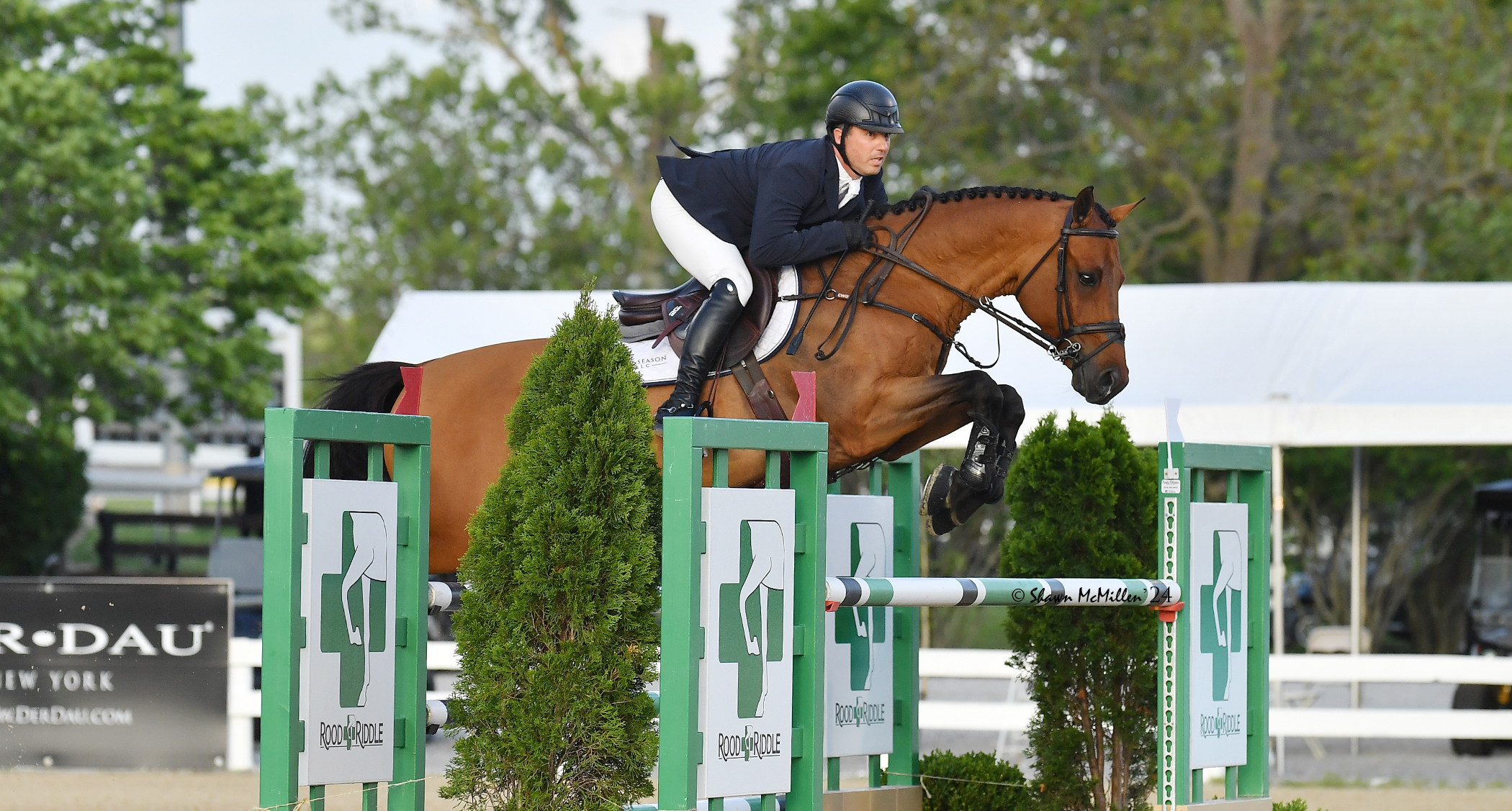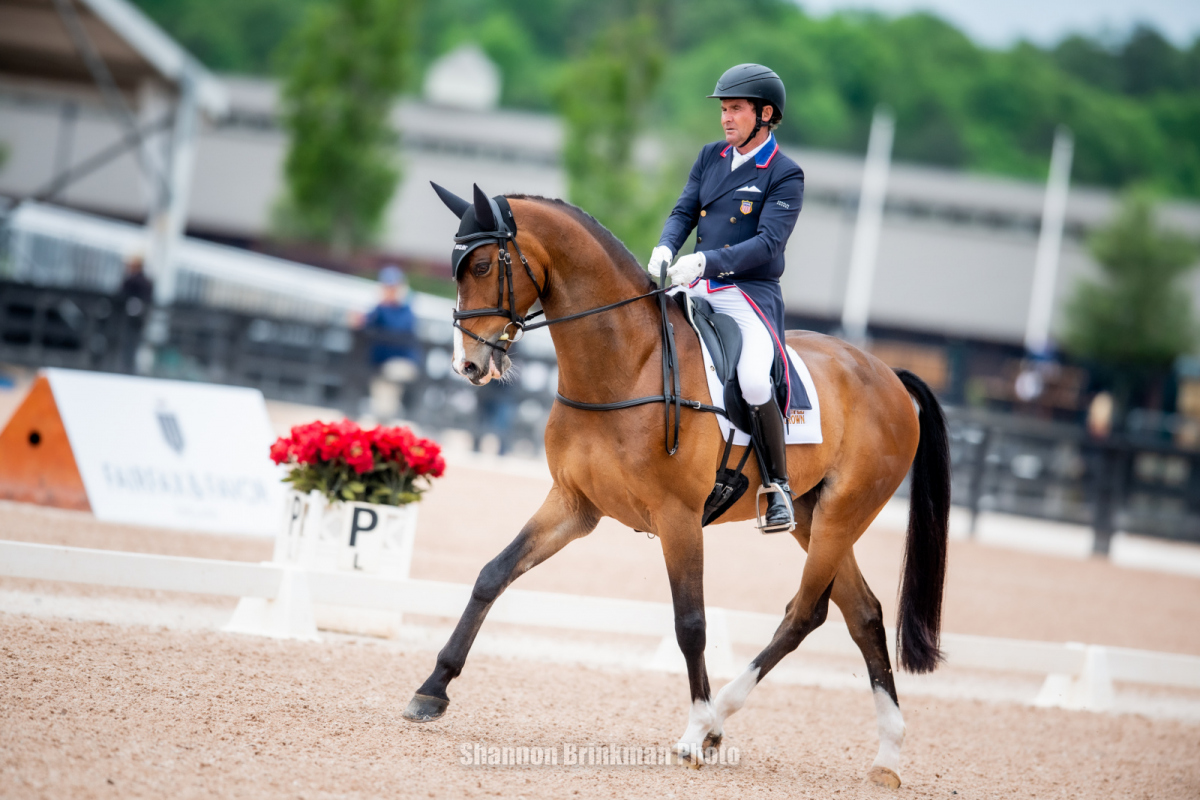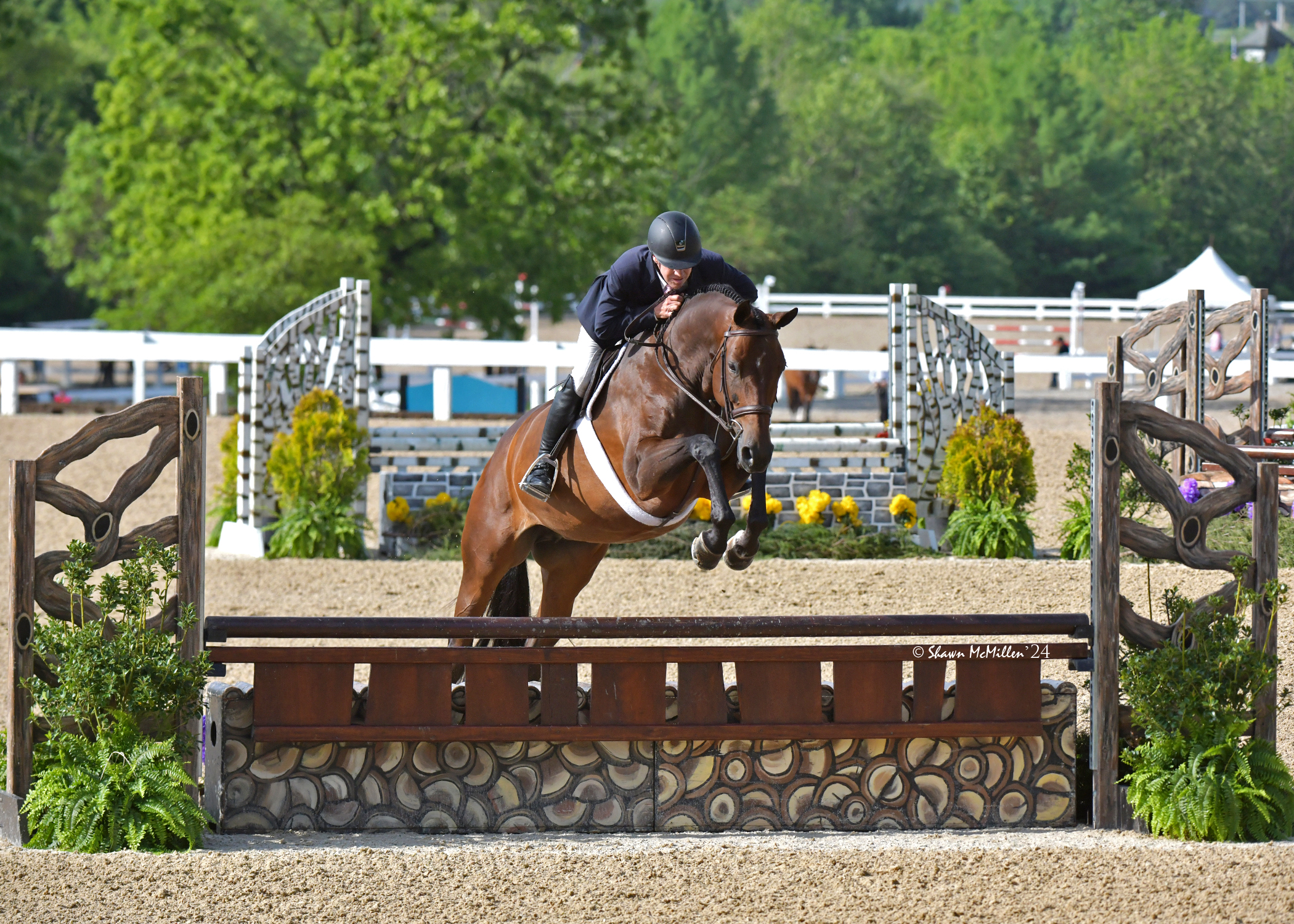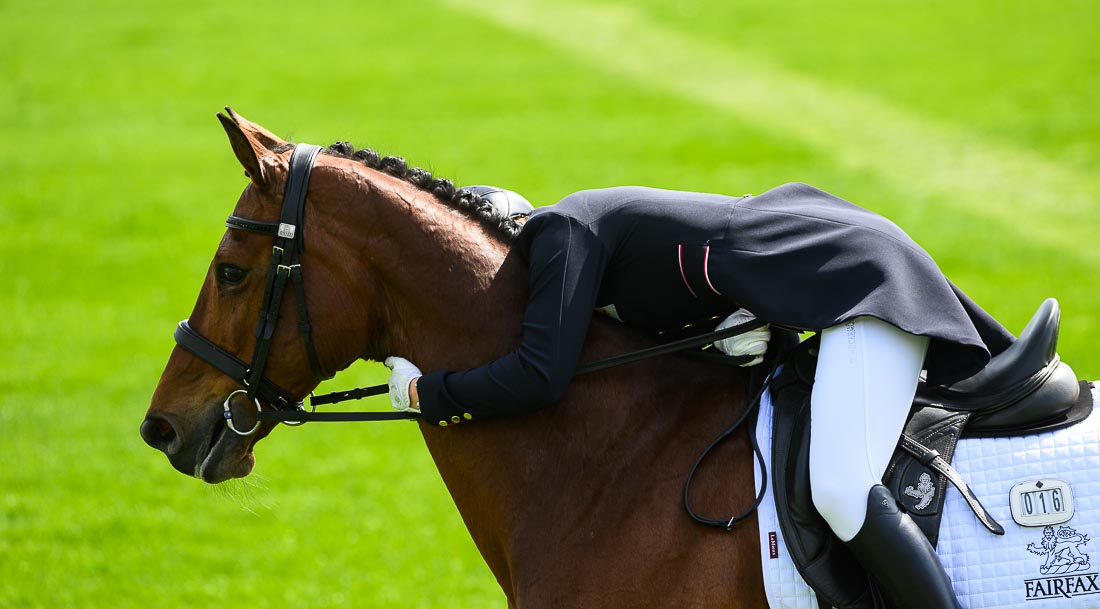We always look forward to seeing what Derek di Grazia has brought from his brain to the hallowed grounds of Kentucky Horse Park each spring for the Defender Kentucky Three-Day Event. This year is no different. Derek typically begins planning (scheming?) for the following year nearly as the preceding year’s event concludes, and the undulating terrain here provides ample opportunity for him test out some new lines and questions each year.
For this year’s cross country, we’ll see the direction of the course reversed in comparison to the past few years. While the 4* and 5* riders will start and finish in the same area of the course, they will run in the opposite direction as last year. This changes the terrain significantly, particularly at the beginning and end of the course. Let’s dive in to a preview of the 5* track. You can view the 5* in fence-by-fence detail here on CrossCountryApp and the 4*-S course here, and I’ll also embed both right below:
@media screen and (max-width: 500px) { .crosscountry-embed-container { padding-bottom:150% !important; } }
@media screen and (max-width: 500px) { .crosscountry-embed-container { padding-bottom:150% !important; } }
The first quarter of the course will take riders over a handful of rhythm-establishing fences to get their horses thinking forward, as it typical for most tracks. After the first four fences, the riders will come up on the first combination of the day at fence 5ABC, MARS Sustainability Bay. This is the first opportunity for horses to splash into the water, which will come up several more times on the course, and it’s also the first test of turning, particularly to the right which features heavily on this year’s track.
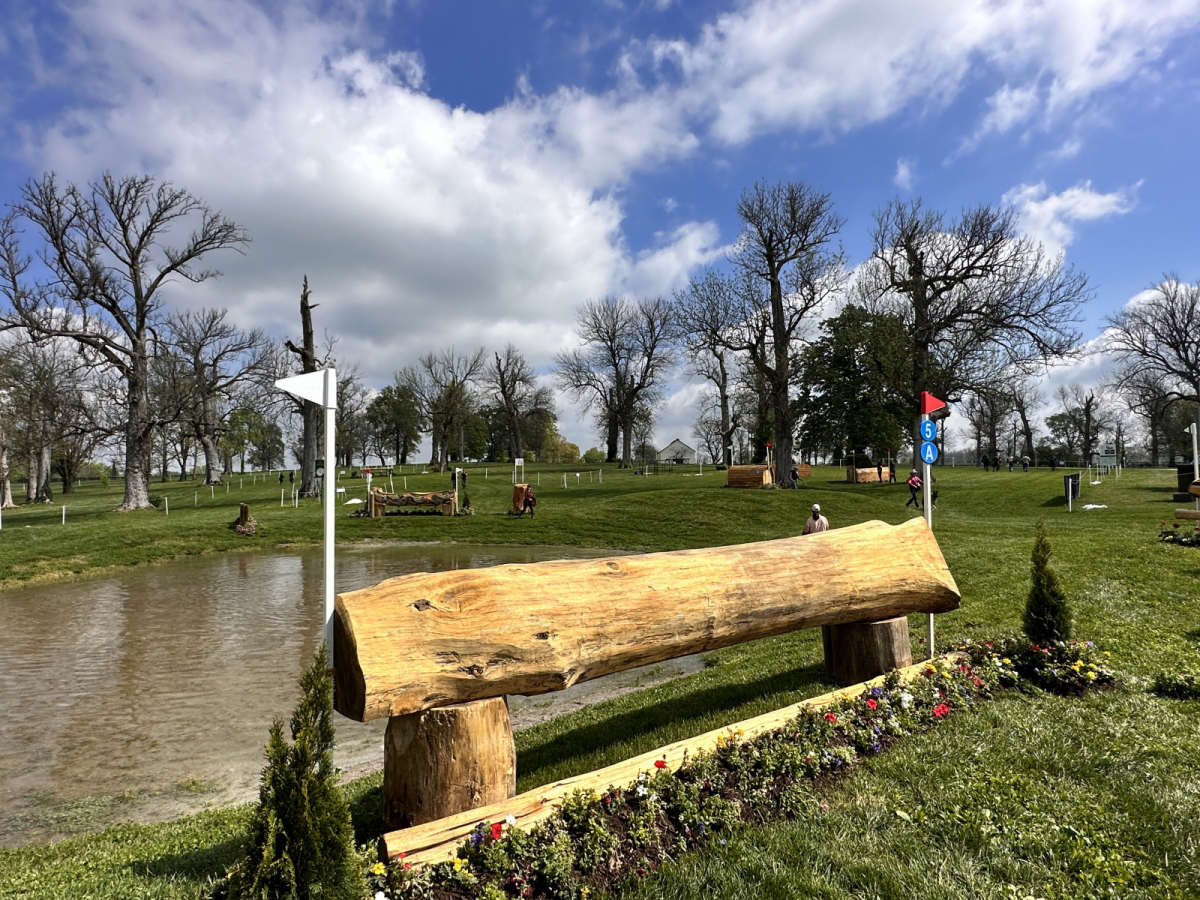
It’s not the biggest test of turns comparatively, but riders will still want to have their lines dialed as there is a steep hill up to the B element of this question, followed by a big brush corner that will demand accuracy to avoid an early problem. There is an alternative route for riders to choose, but Derek believes most will opt for the straight route here to set the tone for the remainder.
After fence 5 comes the first long stretch of galloping as riders pass from the first field into the old steeplechase field, encountering another single fence at 6 (the beautifully decorated Market Table – shout out to the incredible course builders and decorators who’ve made the track look amazing!). They’ll then come to the second water question, the Cosequin Cove at 7 and 8AB. Fence 7 will require a forward ride as a yawning ditch stands in front of a MIM-pinned upright rail.

A supersized corgi will greet riders as they come to 8A, which features a steep drop into water and the first left-handed turn of the course to a suck-it-in skinny triple bar. This is a relatively inviting question here, again an opportunity for riders to insert a jolt of confidence and accurate thinking as they navigate it. Again, there is an option here if a rider has a runout at the B element, but time becomes a factor if you choose this route.
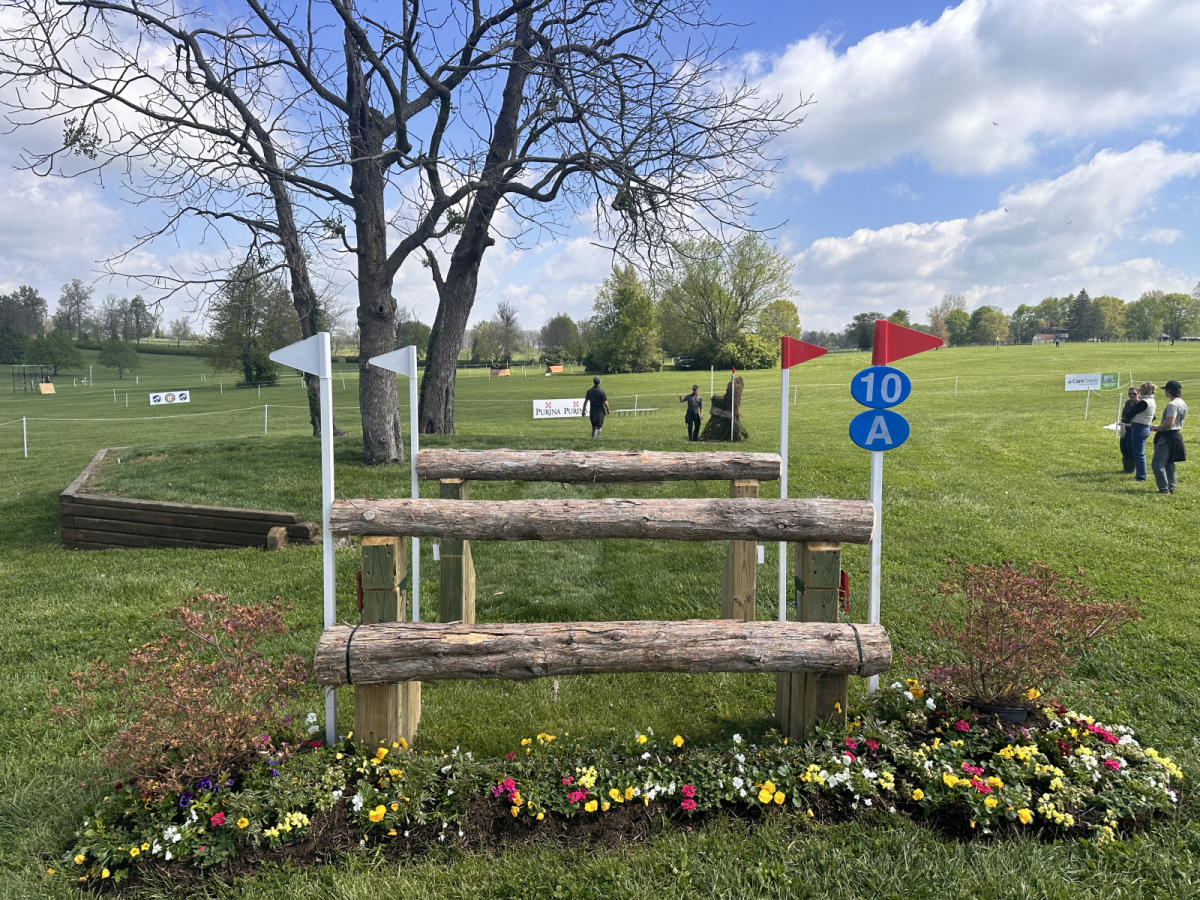
A big uphill pull awaits as the riders begin to head up toward the infield, encountering the third combination at 10AB, the Walnut Bank, which is a new combination this year. Here you’d better have a good rein on that left shoulder as we now get into some of the serious angles that proliferate the course. A narrow oxer comes before a very keen angle to a brush fence a B on a slight downhill.
“It’s an interesting piece of terrain,” Derek explained. “They have to really jump in over the oxer — it’s a bit of a scope question because they won’t want to be going too quick because right away they’re going to have to make a slight bend to a very angled brush, which they’re really going to have to hold their line to.” There’s a big potential to invite a runout to the left here as the downhill slope of the mound will carry the horse’s momentum in that direction, especially if they have a big shot over the oxer at A.
After this, the horses will power up the rest of the hill and then coast down to the infield, an opportunity to get up on the clock as they approach the notorious fly fence, the ditch brush at 11. Definitely mark this one on your list to snag a video on your phone — it usually elicits some epic jumps!
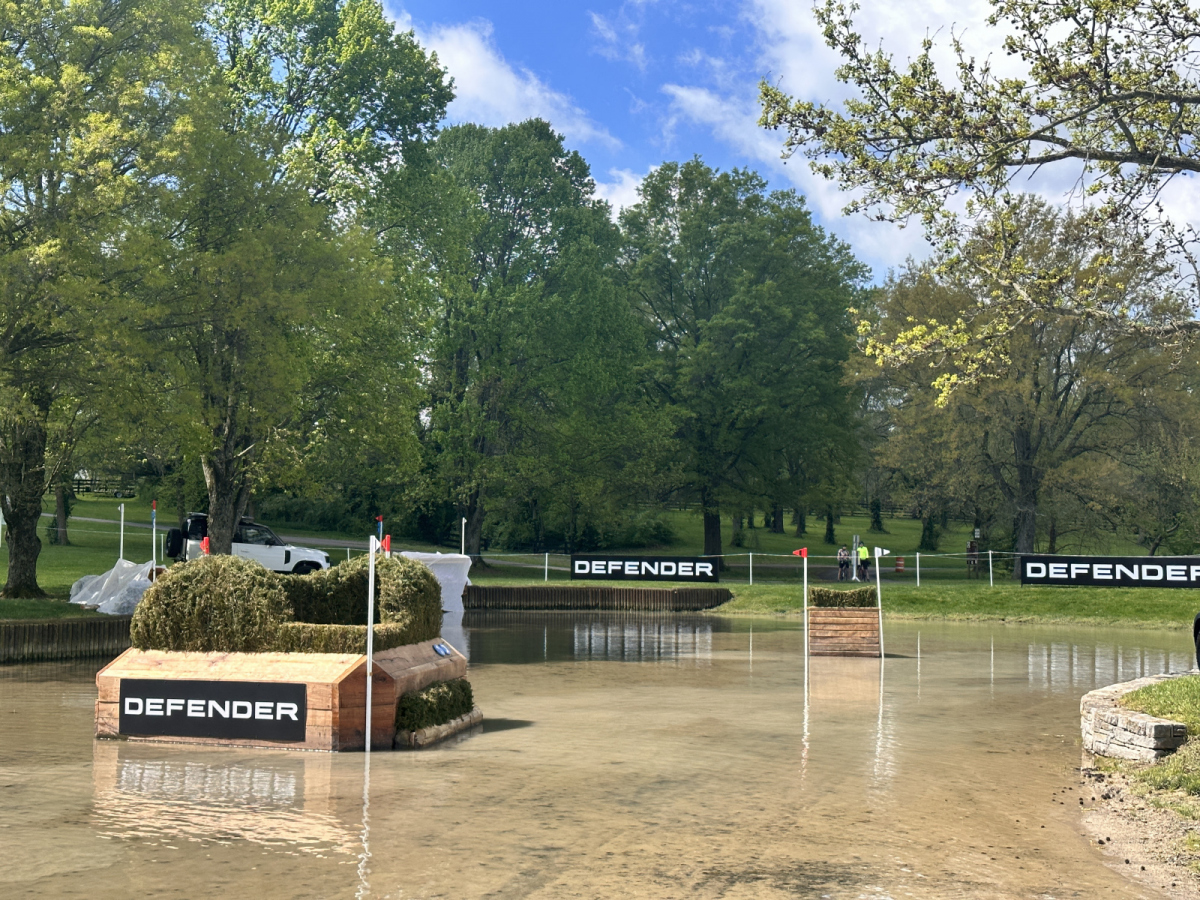
From there, they’ll head to the beautiful Wofford Rails at 12 before going to the crowd-pleasing Defender Head of the Lake at 13ABCD. This is a very intense line, made more complex by both the water, which serves to slow down the horses as well as lengthen their stride, and the size of the brush corner at the CD element. After dropping in over a rolltop, they’ll hit a skinny brush at B and will need to be on their line to make the short distance to the corner on the way out.
A huge element of cross country is quick thinking and reaction speed. Because of the short distance between elements here, a peck on landing at A or any wavering off the line could spell disaster. Of course, there is an option that will eat up the clock, but riders will have a route to take should they encounter difficulty here.
“There are a few different options, but really if you’re in the hunt and you’re trying to win this event, you’re going to do the direct route,” Derek said. “But you’ve got to be brave here, you’ve go to have a good line and really make sure your horse sees what it’s doing and just keep going. I think it will be interesting because I think some of the options will get used because it’s not always going to go perfect on the day.”
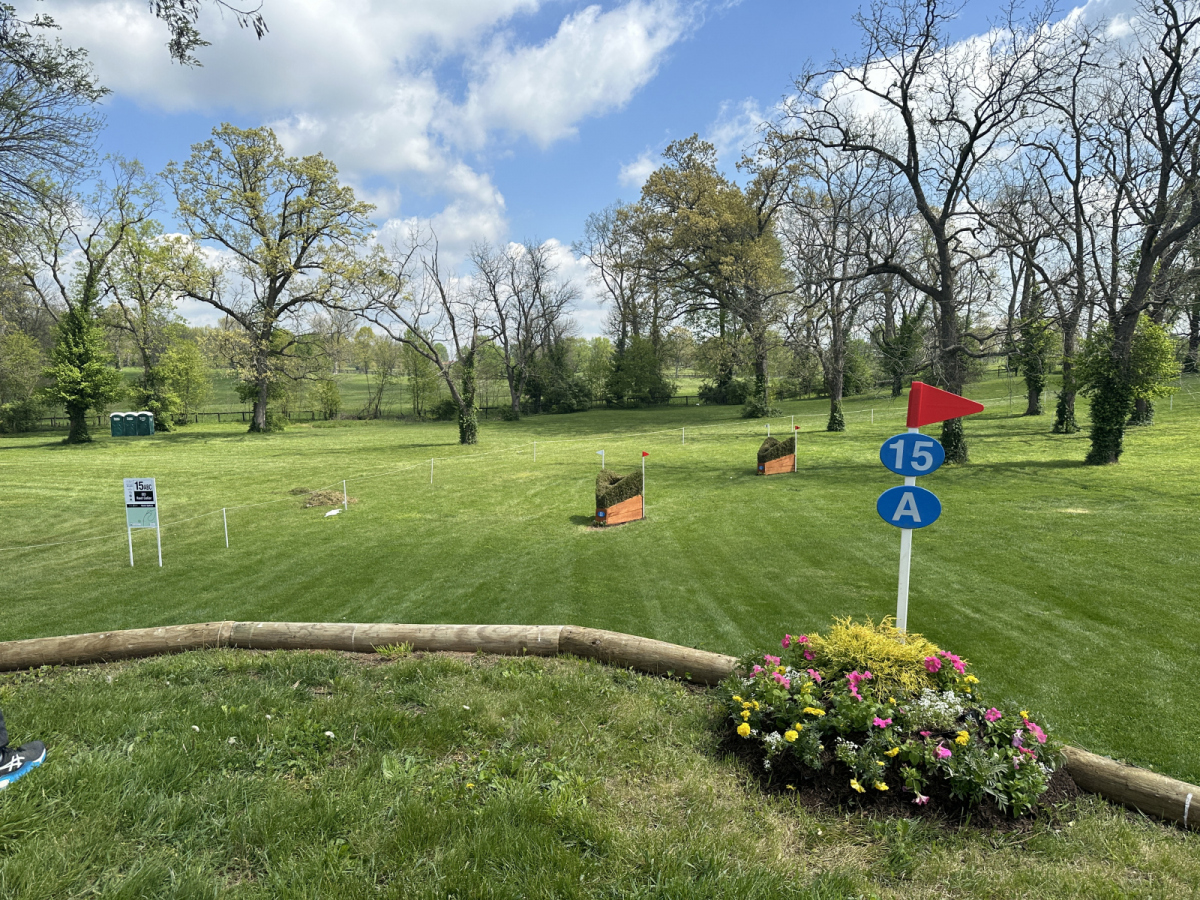
Despite the intricacy of the Head of the Lake, you’re not even halfway done at this point, and much terrain awaits in the next part of the course. Riders will next pull up to the infield, hopping the Blade and Bow Bourbon Table at 14 and then galloping uphill to another new feature for the 5*, the EEI Root Cellar at 15ABC. This bank, which is reminiscent of the Burghley Leaf Pit or the Leaf Pit at Morven Park, has been most recently used on the 4*-S track but now makes an appearance for the headlining division.
I asked James Alliston what went through his mind when he jumped down a bank like this when I ran into him on my tour. He wasn’t very helpful honestly — “Well, just long reins and sit up, I think” — ok, simple enough but I think I’ll leave that job to him. I’d be pulling a Jeff Goldblum and holding onto my butt on the way down, but there’s not much time to recollect as two very skinny brush fences await at the base, and of course they aren’t on a totally straight line either, because why would they be? I’d be marking this one down as a fence to watch if I were you.
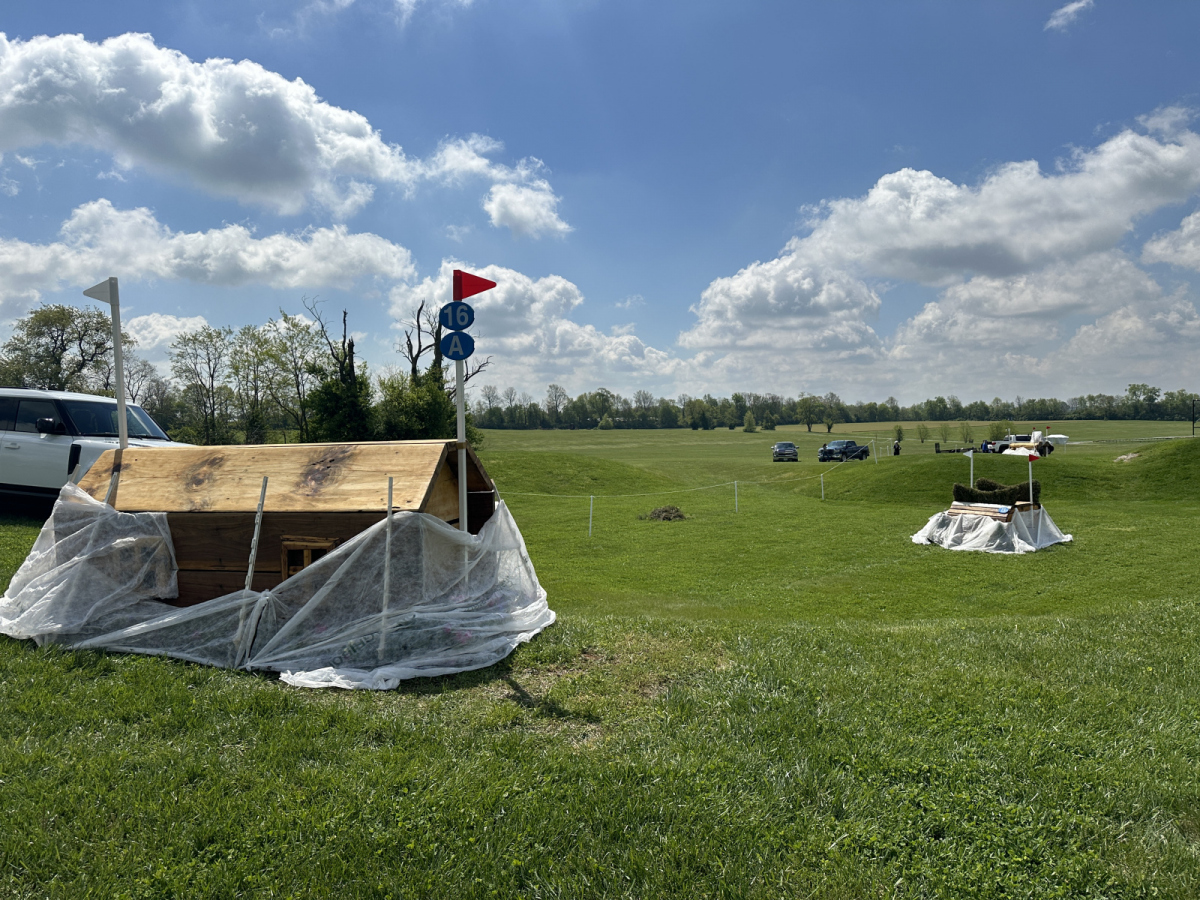
After this, it’s another major uphill pull to get to the peak of the course at Pete’s Hollow, fence 16ABC. Again, you’re tasked with turning right, having had plenty of practice to this point on the course, navigating three elements on a rollercoaster of terrain. You will see horses who may have run out of some steam getting up to the hill, which would cause some drive-bys. The Hollow tends to be fairly influential for all of these reasons, so it’s worth trekking up there to see the action for yourself.
Here is a chance for the horses to really take a breath and catch a second or third wind, as you now have a relieving downhill gallop and a nice fly fence at 17 (Mick’s Picnic Table) to get back to focusing ahead of the next water challenge at 18ABC, the Rolex Grand Slam Challenge.
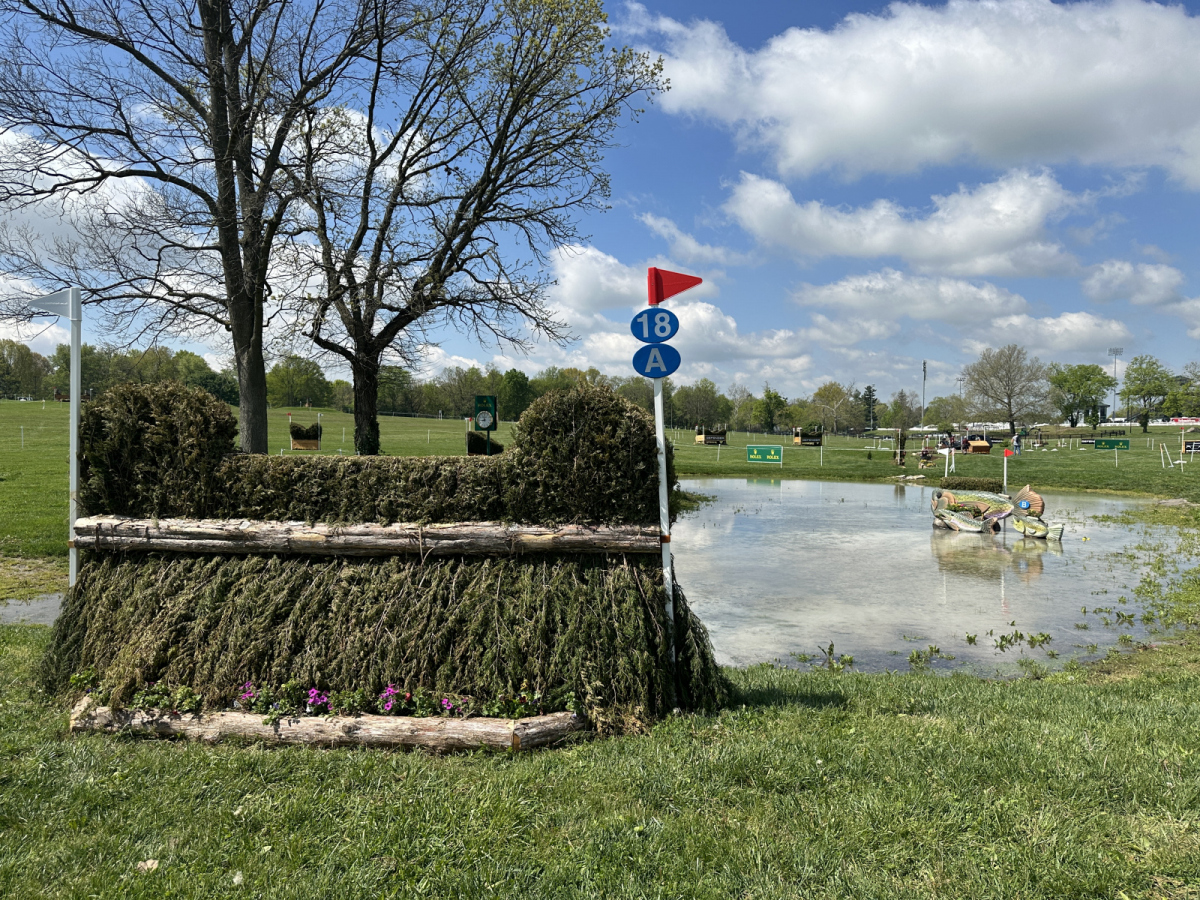
This question again tests the horses’ ability to hold a line and move their feet quickly, and a another big ditch in front of a brush awaits after a sharp left turn at the C element. There’s also much to look at here — there are massive crowds gathered in the infield at any given point in time, and there are also several elements from the 4* track situated here, so focus will be key which can be a challenge if a horse is beginning to tire.
Hopefully your horse has taken a breath at this point because the last big uphill pull — and it’s a long one — comes next. You’ll need to get the engines rumbling to make it over the massive Squirrel Tables at 19, which offer a left and a right option depending on what line the riders want to take at the Normandy Bank at 20 ABC.
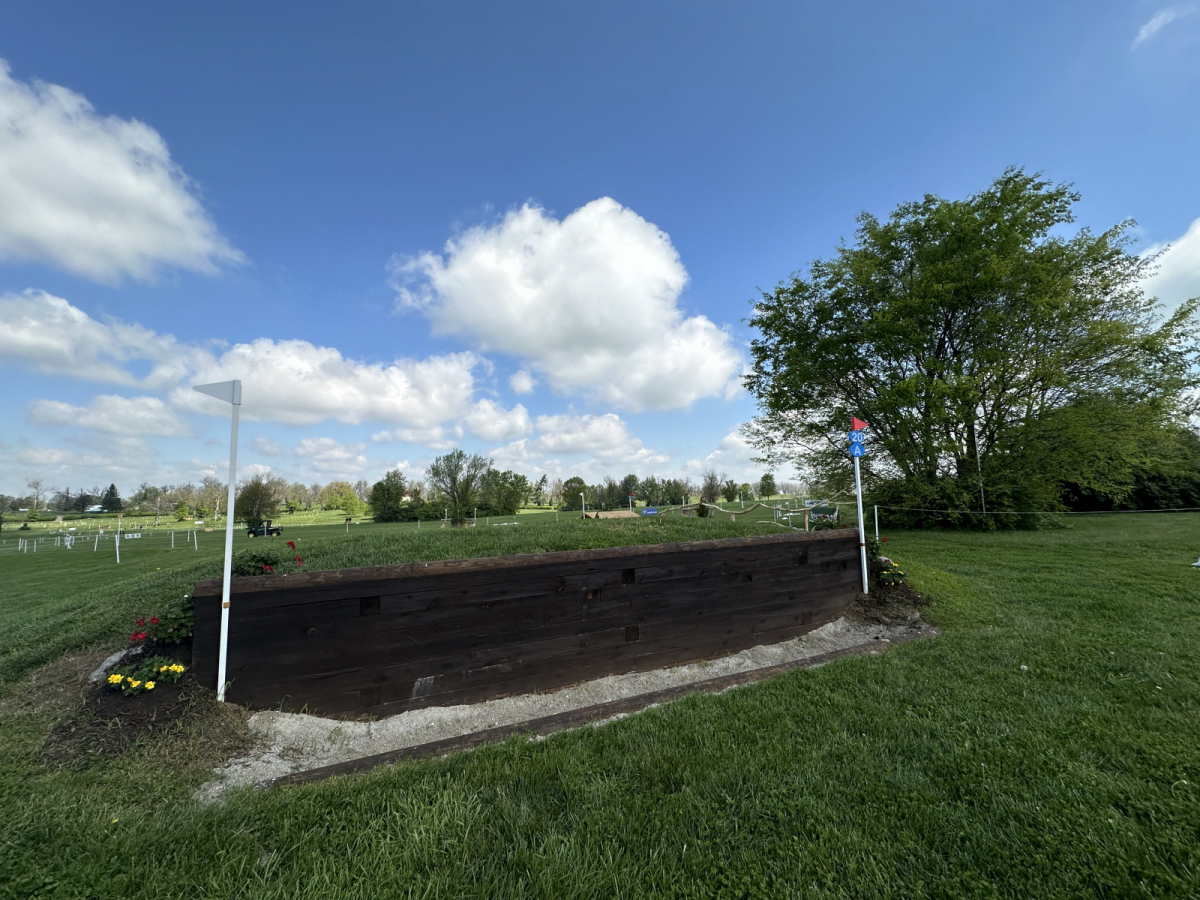
Once again, to the right, to the right as the horses will need to jump sharply up the Normandy Bank before coming to an angled house at B and a big open corner at C. The alternate route here is a carousel that will likely get a good amount of use at this point in the course but will eat up more precious seconds.
But after this, you’re going back downhill so you’ll get a big of a boost with two single fences before coming to the coffin complex, which is always incredibly influential and should be even more so this year with how late it comes.
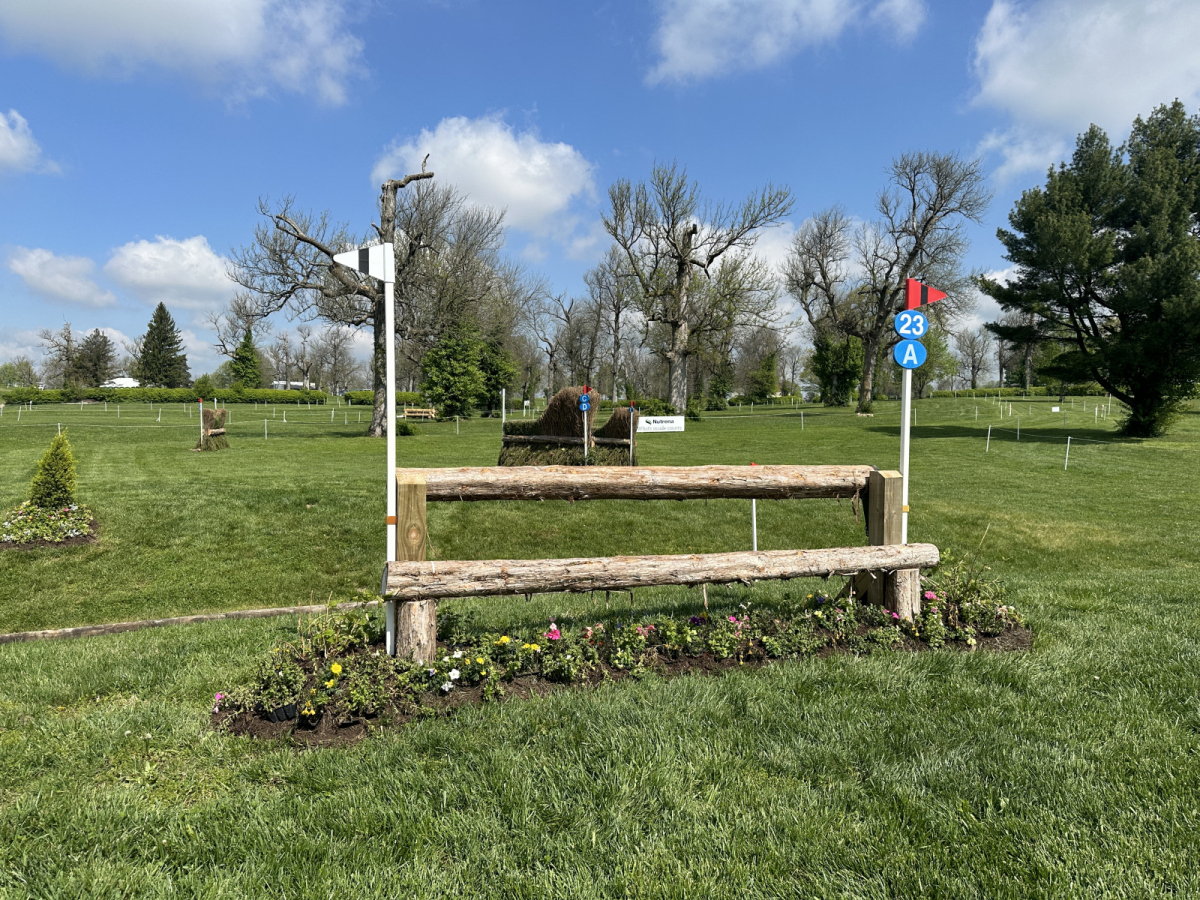
A MIM-pinned upright rail welcomes horses to the Park Question at 23ABCDE. We’ve seen a similar-looking coffin question at Carolina (designed by Ian Stark) this year, but the steeper terrain and the addition of a second sharply angled brush makes this a true 5* question. There is not much time to make the turn from the ditch to the angled brushes at CD and E, and again at this point you will see some horses beginning to tire. The downhill gallop can be useful for catching breath, but a fatigued horse will have trouble sitting back on his hocks and moving his feet quickly to avoid engaging the MIM pin at A, and reaction speed could be slower at this point.
At nine and a half minutes in the course, your strategy will be key here. Any type of wiggle or bobble at A or B will cause trouble for the brushes, so here is where the option could come in and I think you’ll see more than one rider opt for the option right away.
“As a rider, you really have to make sure that you’re really helping your horse here,” Derek said. “The riders have to really make sure that they don’t have an unwanted activation [at A] and then once they jump in, they’ve got to make sure that they help their horses here and they get the right line jumping out. Riders will really have to make sure that they really have all the plans here so they can navigate this combination clean.

You’re almost there! By now riders will be really thinking about home, but it’s by no means a coast from here. The Mighty Moguls at 25ABC are the final combination, once again utilizing the terrain to create opportunities for issues, however the use of logs I feel is quite welcoming to the tiring horses as these types of jumps tend to be more forgiving comparatively. Terrain and turning aside, these fences *should* be fairly straightforward, but again remember you will not be sitting on the same horse you left the start box on at this point.
Two more single fences stand between the riders and the finish, so at this point it’s about getting them home safely and as quickly as possible. It’ll be mostly downhill from the Moguls on, which I really like as I think this will put some wind back into the horses so they can finish well.
The optimum time for this year’s course is 11 minutes, 15 seconds. It will be a true championship test that will allow the riders to learn much about the effectiveness of their preparation. We wish all riders safe and clear rides tomorrow — it will be a thrilling day of sport and we can’t wait to see you there!
#gallery-1 {
margin: auto;
}
#gallery-1 .gallery-item {
float: left;
margin-top: 10px;
text-align: center;
width: 25%;
}
#gallery-1 img {
border: 2px solid #cfcfcf;
}
#gallery-1 .gallery-caption {
margin-left: 0;
}
/* see gallery_shortcode() in wp-includes/media.php */
EN’s coverage of the Defender Kentucky Three-Day Event is presented by Kentucky Performance Products, your one-stop shop for science-backed nutritional support for all types of horses. Click here to learn more about Kentucky Performance Products.
Defender Kentucky Three-Day Event [Website] [Entries] [Schedule] [Tickets] [Scoring] [Live Stream] [EN’s Coverage]




